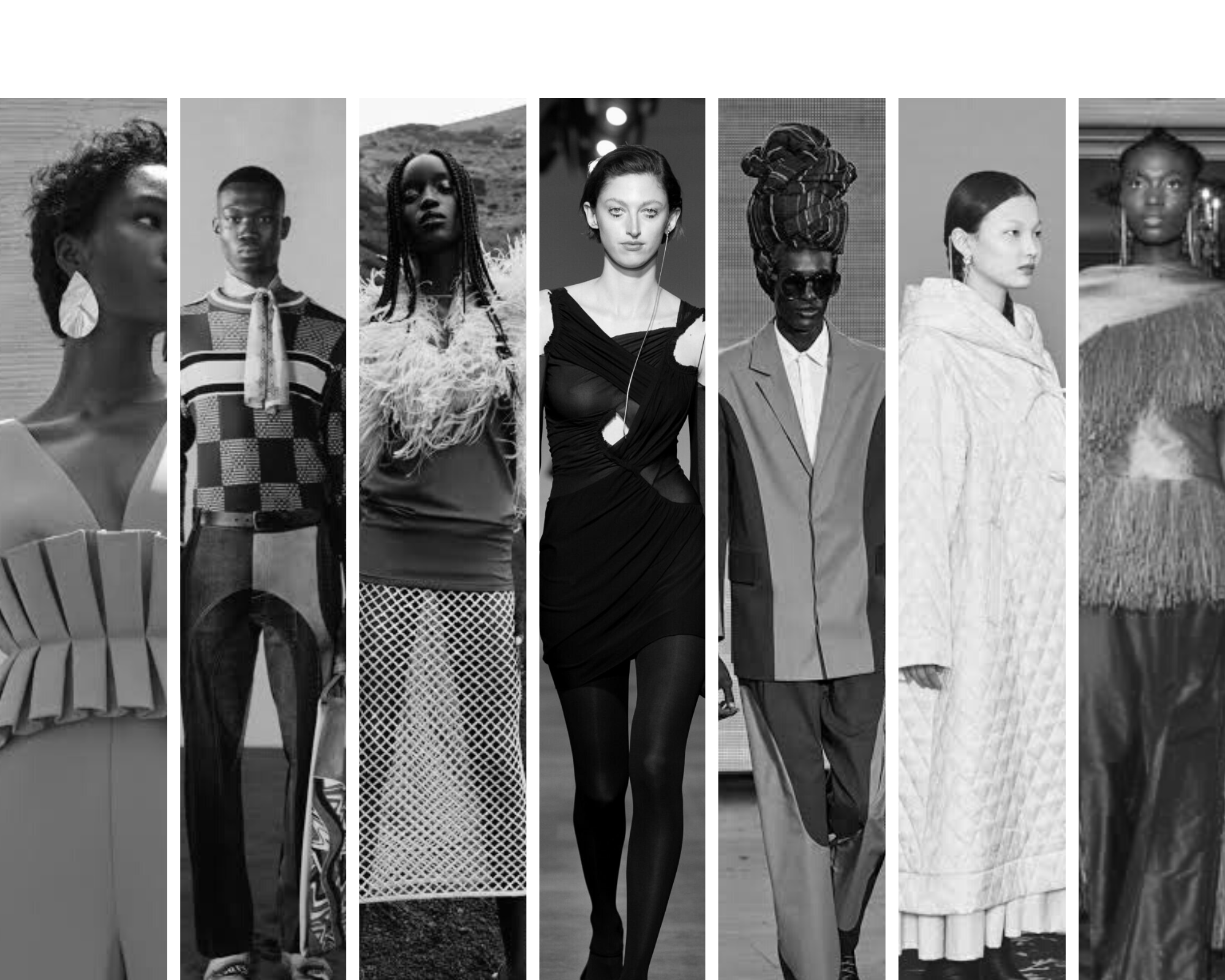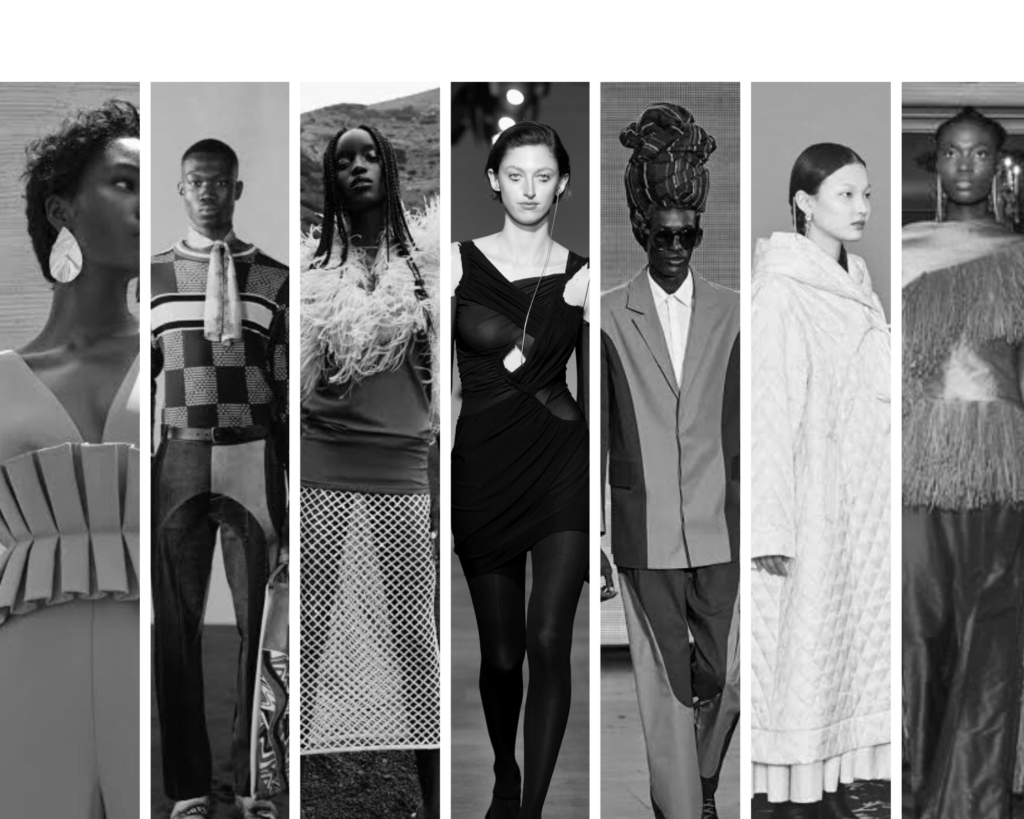
Fashion Pathfinders 2024
Pathfinder; “one that discovers a way”
Welcome to the Fashion Pathfinder, a weekly Newsletter that will feature personal and professional insight, articles, interviews, and resources for Fashion Founders, Professionals, and Enthusiasts.
Every year, there are key paths that define how the Global Fashion Industry works and grows, in this year’s article, I will share Eight (8) key paths and insights that will shape the Business of Fashion in 2024.

These pathfinders are recommended insights that should direct how you operate this year;
Fashion Pathfinders 2024: Navigating Key Trends Shaping the Business of Fashion
1. Focus on Community Building
Building formidable partnerships and collaboration is fast becoming a necessity in the Fashion industry, and 2024 sees a deepening emphasis on building and engaging with communities in the industry. Beyond traditional consumer bases, brands are now focused on cultivating authentic connections and fostering a sense of belonging to their audience. Social media platforms, especially visual-centric ones like Instagram and TikTok particularly popular among fashion enthusiasts, influencers, and brands serve as key community hubs. Community-driven approaches include co-creation projects, where consumers actively contribute to the design process, fostering a sense of loyalty. Fashion workshops provide a platform for interaction among industry leaders ensuring the development of effective strategies to propel the fashion industry forward. In 2024, Fashion Brands should prioritize the creation of meaningful communities, leveraging their potential to initiate innovative collaborations among both established and emerging players in the industry.
A digital creative community like Lhaude Africa, a pan-African creative and cultural institution that is focused on community building bringing different creatives and fashion entrepreneurs together to learn, grow, collaborate, and scale.
2. Empowerment and Human Capital Development
Empowerment in the fashion industry goes beyond aesthetic expression as it focuses more on talent nurturing and fostering inclusivity. Fashion Businesses and Institutions should prioritize human capital development by investing in the skills and well-being of their workforce, this aligns with a broader societal shift towards conscious capitalism, acknowledging businesses’ role in shaping a positive and empowering work environment. Initiatives such as skill development programs, mentorship schemes, and commitment to diversity and inclusion are crucial. In 2024, founders and organizations need to ensure they hire the right talents for exceptional work and invest in individuals who contribute significantly to the company’s success. The more empowered your team is the stronger your company.
3. Luxury Acquisition – Luxury on the Rise
The emergence of Luxury from Africa signifies a noteworthy trend where an increasing number of individuals are embracing the richness of the African heritage and connecting on a global scale. Luxury has evolved beyond the exclusivity of products, it now encompasses immersive and enriching experiences for consumers. Emerging luxury brands should focus more on creating very curated and exclusive experiences for their luxury consumers. Brands will be at the forefront of redefining luxury acquisition by placing a distinct emphasis on experiential elements. This contemporary approach to luxury involves the introduction of limited-edition releases, allowing individuals to indulge in uniquely and rare pieces. Moreover, personalized shopping experiences are curated, ensuring that each interaction with the brand is tailored to the individual’s preferences, fostering a deeper connection between the consumer and the brand.
4. Collaboration: B2B Collaborations
Collaboration has emerged as a crucial strategy for businesses, offering a significant impact on their overall success. In the current economic climate where many businesses face the risk of collapse, collaboration becomes imperative. The demands for resources and networks underscore the importance of fostering a sense of community.
Recognizing this, Fashion CEOs and C Suite executives must not only acknowledge the power of collaboration with consumers but also within the industry. Business-to-business (B2B) collaborations have gained prominence as a strategic approach. This entails partnerships between fashion brands, manufacturers, and retailers, aiming to create synergies for mutual effort. These collaborations are characterized by shared resources, sustainable practices, and joint marketing efforts, contributing to the development of an interconnected and resilient fashion ecosystem. In an era where adaptability is key, B2B collaborations emerge as a cornerstone for innovation and sustainability in the fashion industry.
Some examples:
- Burberry x Supreme. Burberry provided the style and patterns for affordable luxury brand Supreme’s puffer jackets, stylishly launched/confirmed in a social media post featuring rapper A$AP Nast.
- Supreme v Tiffany’s. Supreme also recently reimagined versions of classics like Tiffany’s star bracelets and heart tag pendants.
- adidas vs Prada – a long-standing collab that has just seen its third range launch. Their new collection features a range of Prada-branded Forum sneakers, bags, and bucket hats.
- Reebok vs Maison Margiela – another long-standing collaboration where Maison Margiela designs a limited edition range of sneakers from Reebok.
5. Tech Integration for Enhanced User Experience.
There is a growing inclination towards real-life and in-person experiences, it’s crucial not to overlook the transformative impact that technology can have in augmenting user experiences.
In the digital age, technology isn’t just a tool; It serves as a bridge to elevate user interactions. Fashion brands must understand the significance of seamlessly integrating technology into their operations. Augmented reality (AR) and virtual reality (VR) are being employed to enrich the online shopping experience, while artificial intelligence (AI) personalized recommendations provide users with immersive and interactive encounters with products.
Moreover, sustainability efforts within the industry are increasingly tech-driven. Blockchain technology, for instance, ensures transparency in the supply chain, allowing consumers to trace the origins and production processes of the products they purchase. This tech-enabled transparency aligns with the growing consumer demand for ethically sourced and environmentally friendly fashion. Fashion Pathfinders are navigating the intersection of fashion and technology, recognizing that the judicious integration of tech elements can significantly elevate user experiences. By embracing AR, VR, AI, and blockchain, they are not only meeting the evolving expectations of consumers but also driving innovation and sustainability in the fashion landscape.
Nike uses AR to boost brand awareness, attract young customers, and improve customer experience. In 2019, it launched Nike Fit, an AR application that accurately measures foot size through a smartphone, saving time and cost for consumers.
6. The Global recession and volatile economy:
Amid a global recession and economic volatility, individuals are becoming more discerning about their purchases and the contents of their wardrobes. Fashion brands must strategically navigate this challenging period by prioritizing forward-thinking fashion talents to propel their companies forward, regardless of the global economic landscape. Brands are compelled to anticipate long-term consumer preferences and align their strategies accordingly. Instead of focusing solely on short-term trends, the emphasis shifts towards creating enduring value for consumers. Interestingly, a recession can catalyze the acceleration of an ongoing cultural shift towards the popularity of resale. Fashion businesses, including luxury brands, must adapt to this evolving landscape by incorporating resale frameworks into their operations. Beyond the immediate revenue boost, embracing resale contributes to sustainability through circular fashion practices. Brands that actively participate in the resale market not only generate additional income but also gain consumer trust by aligning with values of conscious consumption.
7. Building Sustainably- Ethical Fashion
Sustainability is not confined solely to clothing, shoes, and accessories; it now permeates the very fabric of our work culture. As regulatory frameworks tighten, there is a heightened demand for transparency regarding the operational and creative aspects of fashion brands.
Consumers are increasingly seeking inclusivity in a business’s sustainability journey. This evolution signifies a shift from the fashion industry’s self-regulation to a more transparent and accountable era. Brands must adapt their fashion business models to align with these impending changes. Understanding the profound implications of sustainability, both in the workplace and in the eyes of the audience is pivotal for Fashion Pathfinders seeking to build sustainability.
In summary, the year 2024 will witness a heightened importance placed on sustainable fashion as consumers become more cognizant of the environmental and social implications of the industry. Brands that prioritize sustainability throughout their design, production, and consumption practices will be better positioned to meet the evolving desires of consumers for ethical and sustainable fashion. This signifies not just a trend but a fundamental shift towards a more responsible and conscious fashion industry.
Brands like Remake and Good On You champion the need for sustainability by helping the world realize how many brands are taking the responsibility to be sustainable in their production practices, brands like Able, a US-based clothing and accessories brand that works with communities all over the world to make a meaningful impact, producing slow fashion that pays a living wage to women who have faced extraordinary circumstances.
8. Africa Fashion on the Rise- Indigenous Storytelling.
Africa on the rise is not just a trend; it’s a cultural narrative waiting to be unfolded through the compelling art of storytelling. To truly celebrate and promote the African heritage, the power of storytelling becomes our invaluable tool. Whether you’re a seasoned fashion professional or an ardent fashion enthusiast, embracing and vocalizing your origins is paramount.
infuse the essence of our roots into your work, maintaining a commitment to excellence and fostering the ability to scale up, particularly for small fashion business owners.
In 2024, brand marketing takes center stage, with consumers gravitating towards brands that proudly embrace their heritage. Authenticity and relatability become key elements, sparking a surge in the influence of bold, vulnerable influencers who can deeply connect with their audience. The shift creates an opportunity for forward-looking companies to ride this wave, recognizing the value of aligning with the authenticity and boldness that consumers seek.
Woven within our stories lies the evidence that positions African fashion as a major catalyst in the trajectory of the fashion industry for 2024. These narratives not only communicate our cultural richness but also underscore the fact that African fashion is a significant force shaping the global fashion landscape.
Some examples of African fashion brands using their brands to tell stories that uphold the cultural heritage of Africa include Nkwo Official, Lukanyo Mdingi, Thebe Magugu, and Algueye Dakar. Awa Meite and more.

